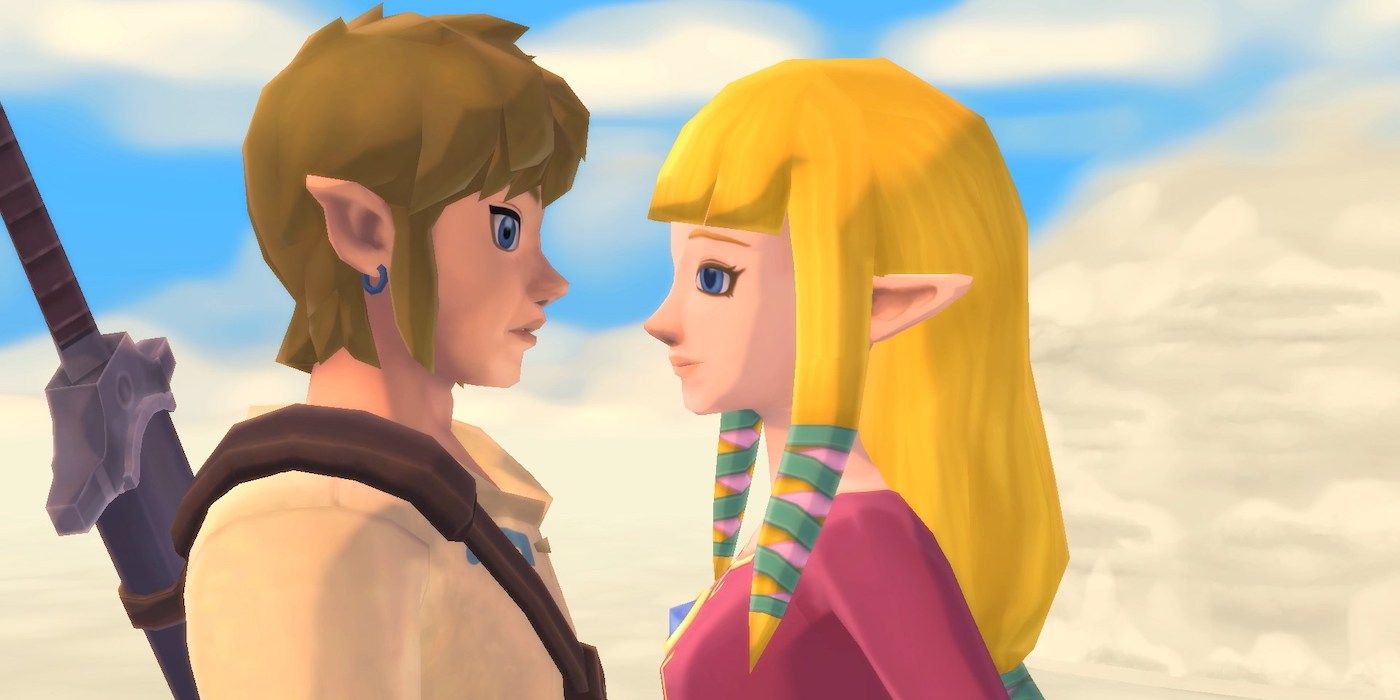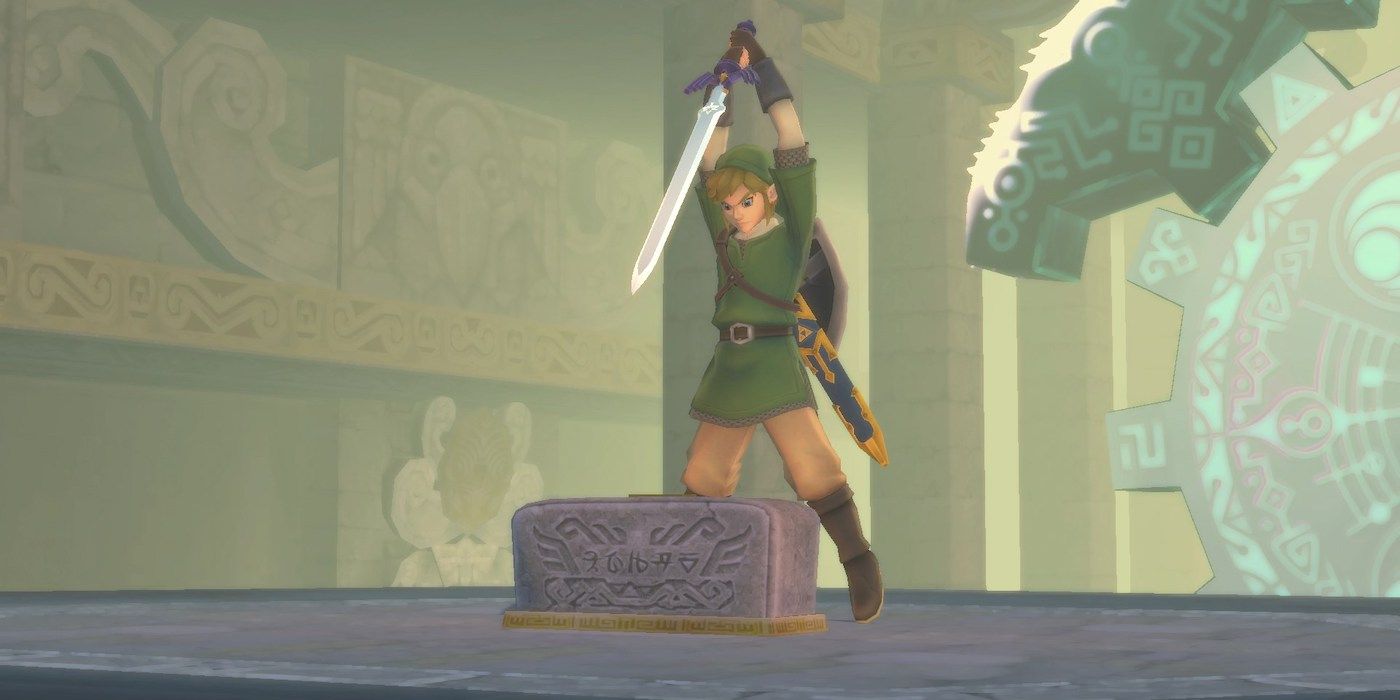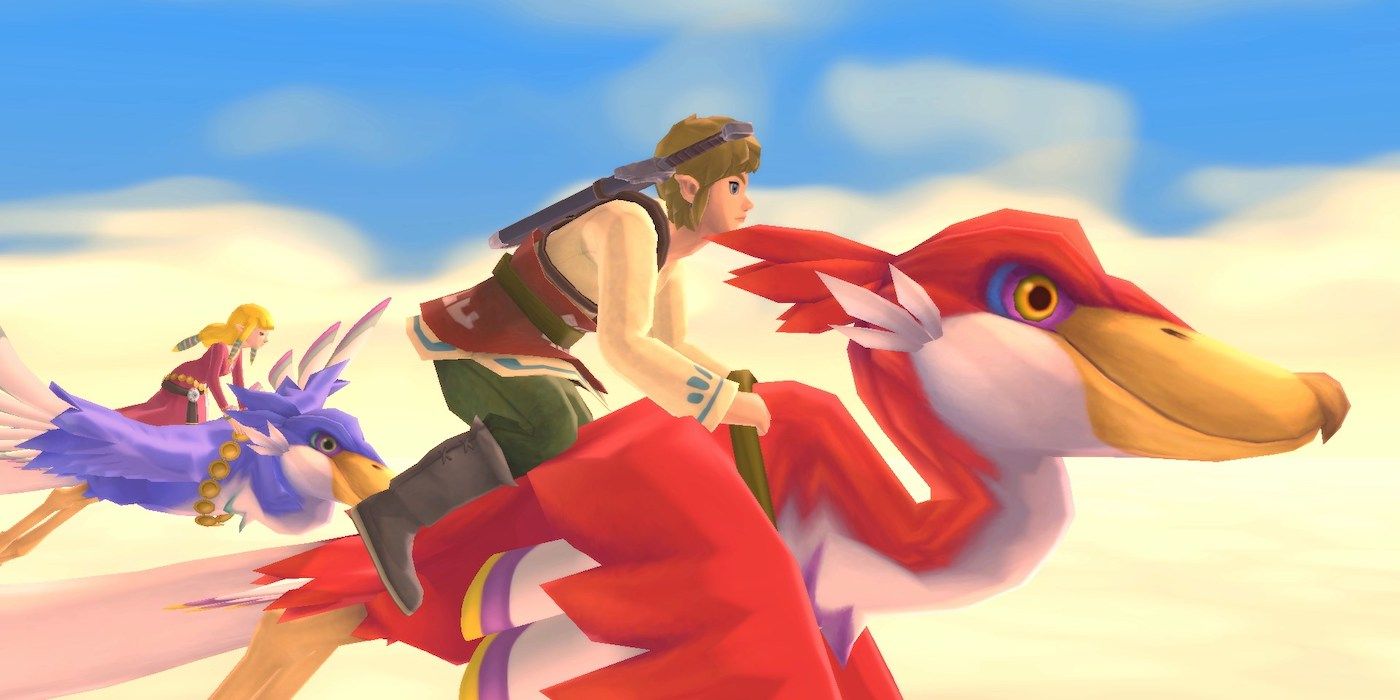This week, all eyes are on The Legend of Zelda: Skyward Sword HD for the Nintendo Switch. It's an entry of the series fans may not have put at the top of their “Dream Port” list, but is likely the only one we’re getting to hold us over until Breath of the Wild 2. Ten years after its original Wii release, players are getting a new chance to take to the skies of Hyrule in this prequel. The game initially did well with critics and in sales, but in the years since, has settled into a bit of a lukewarm reception from fans of the series. A decade later, those criticisms indeed hold up. But as we approach the release of this latest Nintendo Switch port, I’ve begun to think not only about the major faults in the game, but how, thanks to years of space from its original release, those faults will be more easily glossed over by players more eager than ever to sit back and admire what beauty there is in the game.
For starters, we do have to touch base on what exactly made Skyward Sword – at least compared to the mainline console Zelda games – such a disappointment during its Wii lifecycle. So as not to beat a dead Epona, I’ll focus on two of the key factors: the linear structure that feels like a step back from past games, and the over-complicated, exhausting controls that make experiencing that journey feel like a pain.
Previous console hits like Wind Waker and Twilight Princess evolved the structure of the earlier 3D, N64 entries (Ocarina of Time and Majora’s Mask) by giving players a large world to explore, filled with secrets, treasures, and side activities to pad out an already exciting adventure. Skyward Sword, the first in the series exclusive to the Wii, could’ve taken that format to new heights but instead scaled back into something more straightforward, making the undoubtedly beautiful world far less magical than it could have been. But to be fair, maybe having less to explore wouldn’t have been the best thing in the world. Navigation and gameplay were at the mercy of the Wii Remote and the required Wii MotionPlus, making the Zelda game somewhat unique in the franchise for being a right pain in the ass.
Combining a less-than-magical world and a control scheme that saw developers putting too much emphasis on functionality that had already worn out its welcome, this was the first Zelda game in a long while that simply wasn’t fun to play. This is perhaps why the announcement that Skyward Sword would be the next Zelda game to get the Switch port, instead of some other notable classics, rubbed some players the wrong way. However, while the frustrations of Skyward could very well still linger in the hearts and minds of fans, those grievances may be washed away on this new console.
The linear narrative structure may not go anywhere, but after the Breath of the Wild team pulled out all the stops for that game’s endlessly impressive, non-linear open world, being thrust back into a more straightforward journey could actually be a breath of fresh air, so to speak. Skyward Sword initially had to confront the pressure of being the future of the series, while its execution ultimately went in the opposite direction. But now, with time on its side and that pressure gone, players have a chance to go in with fresh eyes and take in the story without the expectation of an open world riddled with hidden secrets. I can’t say for certain if that was Nintendo’s plan when choosing to port Skyward Sword over titles like Wind Waker or Ocarina of Time, but if so, it’s actually pretty brilliant. Those earlier titles already have their places secured as series bests. With this second chance, Skyward Sword now has a chance to inch closer to a similar rank.
That may be much easier to achieve now, considering the absence of the Wii Remote and Nunchuks, with the more streamlined Switch having a much more accessible layout and controller function. Yes, it seems like certain motion-controlled movements with the individual Joy-Cons may be required if you're using them while the Switch is docked, but given that handheld players won’t be able to do that, Nintendo added more options that include button mapping for slightly more traditional playing. Additionally, there seems to be some new “quality of life” improvements to the game, which Nintendo alluded to with a recent clip that shows a “smoother” opening few hours that cut down on NPC dialogue. Those townsfolk really love to chat, but no one has time for all that mess.
Look, Skyward Sword was initially a bummer and was a rare case of the developers of the series trying to do something new and not having it work out all that well. And yes, the fact that Skyward Sword is the next major Zelda game to get a port is also a bit of a drag because I would very much like to lay in bed with my Switch in hand and sail the seas of Wind Waker. But sometimes a game’s worst enemy is hype, and with time comes patience. In the decade since Skyward Sword’s original release, the Zelda game fans had truly been waiting for arrived in 2017's Breath of the Wild. Now, with the pressure off and new gameplay improvements that could make simply enjoying the game much easier, Skyward Sword might finally get a chance to win back disappointed players. A more focused, intimate experience could just prove that, even when it’s not at its best, there’s nothing like being swept into the world of Zelda.
Or, it just needs to be good enough to tide us over until Breath of the Wild 2. Either one would be a win.



